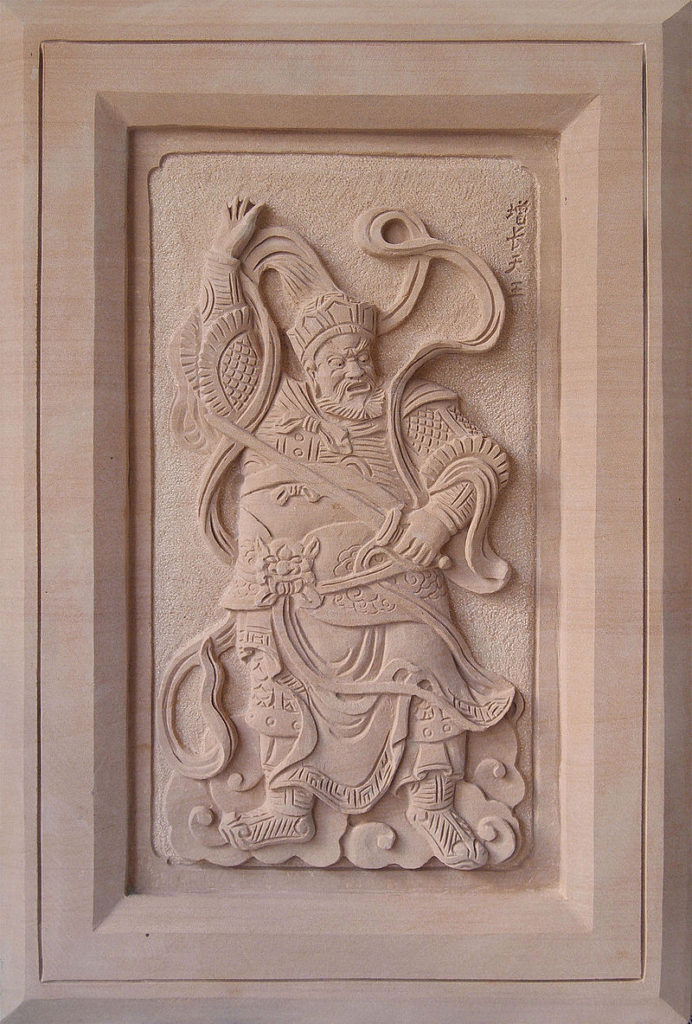
Today I have another tale comes from The Chinese Fairy Book edited by Dr. R. Wilhelm, 1921. “The Spirit of the Wu-Lian Mountain” isn’t about a dragon, though.
To the west of the gulf of Kiautschou is the Wu-Lian Mountain, where there are many spirits. Once upon a time a scholar who lived there was sitting up late at night, reading. And, as he stepped out before the house, a storm rose up suddenly, and a monster stretched out his claws and seized him by the hair. The monster lifted him up in the air and carried him away. They passed by the tower which looks out to sea, a Buddhist temple in the hills. In the distance, in the clouds, the scholar saw the figure of a god in golden armor. The figure looked exactly like the image of Weto which was in the tower. In its right hand it held an iron mace, while its left pointed toward the monster, and it looked at it with anger. Then the monster let the scholar fall, right on top of the tower, and it disappeared. No doubt the saint in the tower had come to the scholar’s aid, because his whole family worshiped Buddha dutifully.
When the sun rose the priest came and saw the scholar on his tower. He piled up hay and straw on the ground, so the cholar could jump down without hurting himself. Then he took the scholar home, yet where the monster had seized his hair, the hair remained stiff and unyielding. It did not improve until half a year had gone by.
According to the note at the end of the story, this story comes from the east coast of China. “The tower which looks out to sea” is a celebrated tower which gives a view of the ocean. At present, it states, the people give this name to the Tsingtau Signal Station. The photo above is of the Tsingtau Signal Station. It was taken by Carl Edward Krause, a seaman in the Imperial German Navy. He compiled an illustrious photo album during the years 1910-1911 while he was stationed aboard the S.M.S. Gneisenau.
I’m having trouble finding much about Weto. I think he must also be Virūḍhaka, one of the four heavenly kings. Below is an image I found on Wikipedia. According to the to the note, Weto’s picture, with drawn sword, may be found at the entrance of every Buddhist temple. In China, he is often represented with a mace (symbolizing a thunderbolt) instead of a sword. He is king of the south and the one who causes good growth of roots. He is the ruler of the wind.
Thursday’s Tales is a weekly event here at Carol’s Notebook. Fairy tales, folktales, tall tales, even re-tellings, I love them all. Feel free to join in.


A different one, nice